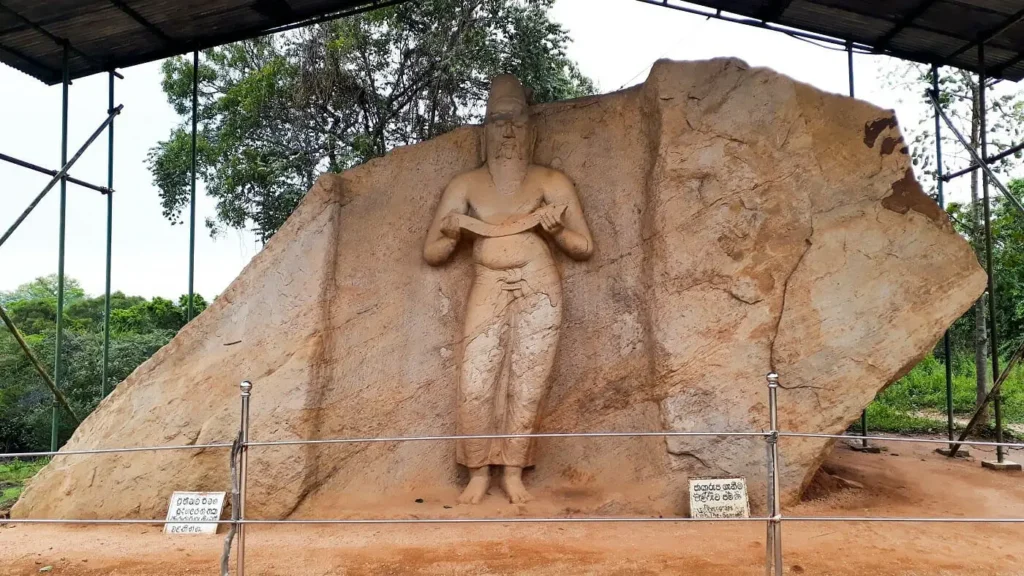
Polonnaruwa, a city steeped in history and culture, stands as a testament to Sri Lanka’s rich heritage. Among its many treasures, the statue of King Parakramabahu I emerges as an iconic symbol of this ancient capital. Nestled within the sacred city’s archaeological complex, this remarkable sculpture encapsulates the grandeur and wisdom of a monarch whose reign left an indelible mark on Sri Lanka’s history.
King Parakramabahu I, who ruled from 1153 to 1186 AD, is renowned for his visionary leadership and indomitable spirit. During his reign, Polonnaruwa flourished as a hub of culture, religion, and governance. His commitment to Buddhism and dedication to the welfare of his subjects earned him the epithet “Parakrama Samudra” or “Sea of Parakrama” for his construction of vast reservoirs and irrigation systems, which still benefit the region today.
The statue of King Parakramabahu, carved from a single block of granite, stands as a 12-foot-tall colossus, a silent sentinel guarding the memories of an era long past. Located in the Gal Vihara complex, this impressive sculpture depicts the king in a standing posture, his right hand raised in a gesture of blessing, and his left hand gracefully resting at his side. The intricacies of his royal attire, including the diadem, jewelry, and the sacred thread, are meticulously carved, showcasing the skill and artistry of the craftsmen of that era.
This statue holds immense significance not only for its artistic merit but also for the cultural and historical implications it carries. It is a tangible representation of King Parakramabahu’s rule and his unwavering commitment to Buddhism, which played a pivotal role in the development of the ancient city of Polonnaruwa.
The gesture of King Parakramabahu’s right hand, offering a blessing, reflects his dedication to the welfare of his people and his commitment to promoting Buddhism. This profound message of compassion and leadership endures through the ages, making the statue not just a work of art but a living testament to the principles upheld by the great king.
The preservation of the statue of King Parakramabahu has been a top priority for Sri Lanka’s archaeological authorities. Conservation efforts have included periodic cleaning, protection from environmental factors, and the establishment of visitor guidelines to ensure its long-term survival. These measures have helped maintain the statue’s pristine condition, allowing visitors to admire its beauty and historical significance.
The statue of King Parakramabahu stands within the Gal Vihara complex, which also includes three other remarkable sculptures of the Buddha. Together, these sculptures make the Gal Vihara one of the most important and revered sites for Buddhists in Sri Lanka. Pilgrims and tourists alike flock to this site to witness the awe-inspiring beauty of these ancient masterpieces and to pay their respects to the great king and the enlightened one.
The statue of King Parakramabahu in Polonnaruwa serves as a poignant reminder of Sri Lanka’s glorious past and the remarkable achievements of a visionary monarch. It embodies the spirit of a king who dedicated his life to the welfare of his people and the promotion of Buddhism. This regal statue, with its intricate craftsmanship and profound symbolism, continues to inspire and captivate visitors from around the world, offering a window into a bygone era of grandeur and wisdom. As a cherished part of Sri Lanka’s cultural heritage, it stands as a testament to the enduring legacy of King Parakramabahu I and the resplendent city of Polonnaruwa.

Take hat or something else to cover by sun light.
